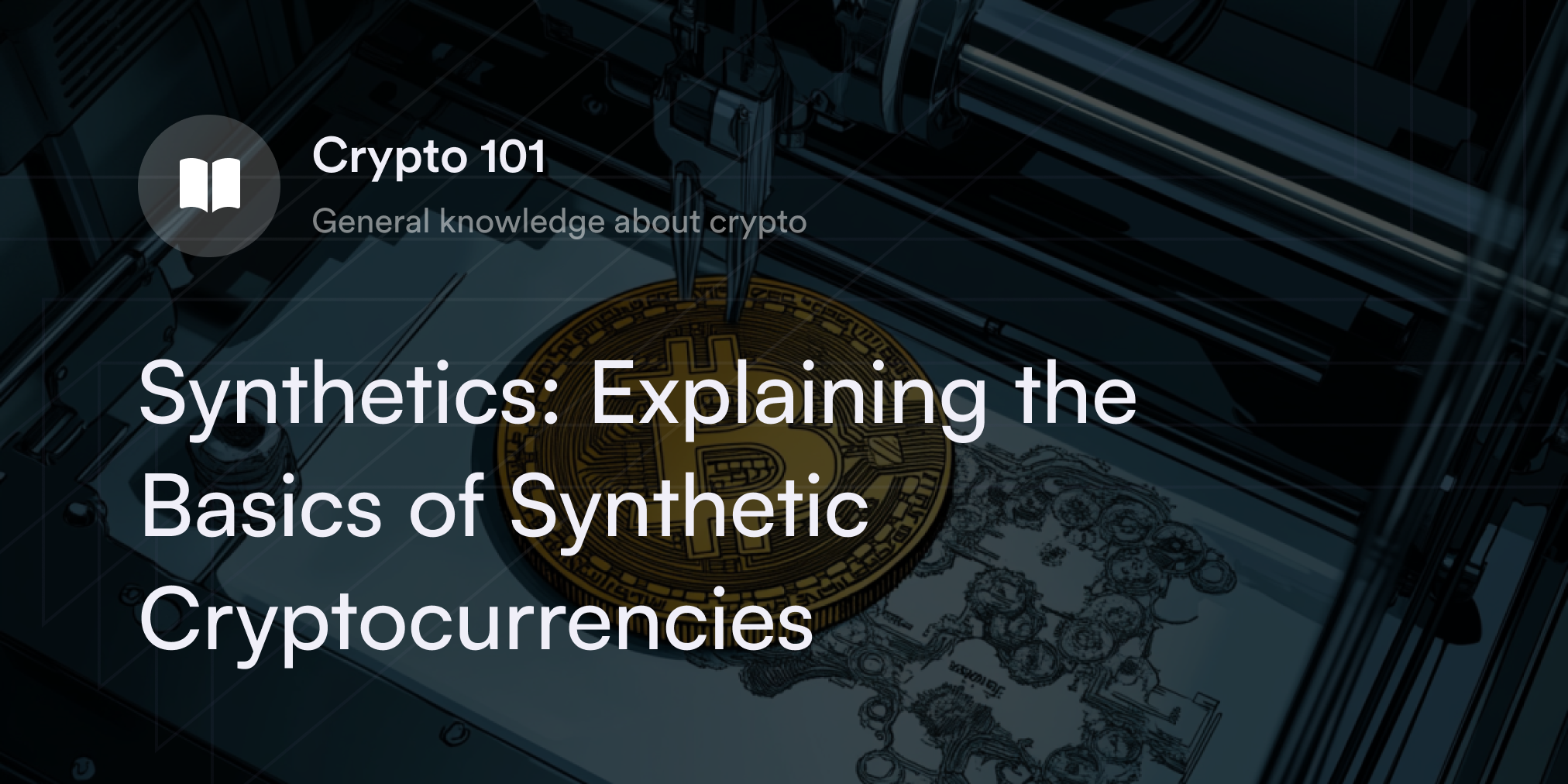


Designing and launching a new cryptocurrency might seem like something only computer programmers and cryptographers have the technical chops to pull off. After all, the leaders behind successful crypto projects like Ethereum (ETH) and Polkadot (DOT) have PhDs in coding, computer science, or a related hi-tech field.
But while creating cryptocurrencies often requires tech-savvy smarts, there are opportunities for novices to launch a crypto token into cyberspace. In some instances, people don't even need to know much about the foundations of blockchain technology to start experimenting with crypto creation. There are even a few reports of amateurs creating meme-themed crypto tokens in no more than 25 seconds.
Cryptocurrency development isn't always simplistic, but there are ways for everyone to participate in the crypto revolution. Here’s how to make a cryptocurrency from scratch and the ways to get involved in designing and deploying virtual assets.
How to Make a Cryptocurrency: A Few Preliminary Considerations
Deciding to build, launch, and maintain a new cryptocurrency is no small feat, even if you possess years of coding experience. If you’re interested in pursuing this path, setting aside plenty of time to define your crypto project's goals and needs is key. To start, establish a few primary considerations to help figure out your vision’s viability:
1. Understand Coins Versus Tokens
When developing a new cryptocurrency, decide whether your project fits the criteria of a "coin" or "token." For context, coins are cryptocurrencies on a proprietary decentralized network (aka blockchain), while tokens are on top of a coin's pre-existing blockchain platform.
Generally, coins transfer value on peer-to-peer (P2P) networks and for essential processes on a blockchain (e.g., paying transaction fees). Tokens, on the other hand, use the security of a coin's blockchain network as their "backbone" to explore a wide range of innovative use cases, including rewards in a decentralized video game, voting rights for online governance proposals, or digital collectibles.
Of these two categories, coins are more complicated and time-consuming, especially if you create a coin on your own blockchain without coding templates. Even if you use open-source code from another cryptocurrency on GitHub as a starting place, you need a strong background in programming languages to write clean code. If you don't already have a high proficiency in your target coding language, consider hiring a dev team to make a crypto coin.
Tokens, by contrast, don't require as much time, skills, or effort to create since you’ll rely on the underlying blockchain for security. Another benefit of creating crypto tokens rather than coins is that the former opens the door for unique use cases, which aren't available in the deterministic architecture of a coin's blockchain. Since token projects offload much of the burden of basic computational processes (e.g., using nodes to broadcast new transaction blocks), they can build unique use cases in Web3. On the downside, tokens must abide by the standards set by their respective blockchains and rely on the integrity of their underlying networks. Since tokens don't set the rules for the base layer's consensus mechanism, governance procedures, or fee structure, they should work cohesively with their partner blockchain’s system.
2. Define a purpose and USP
If you can't decide whether to create a crypto token or coin, define your project's goal and unique selling proposition (USP) to get a direction. Like starting a business or launching a new product, the most successful cryptocurrencies have a clear and compelling use case.
For example, cryptographer Satoshi Nakamoto defined Bitcoin (BTC) as a new "Electronic Peer-to-Peer Payment System" in the 2008 "Bitcoin Whitepaper." The Ethereum blockchain’s developers, however, introduced the ether coin as a way to pay for services and fees on the blockchain's decentralized applications (dApps). So, all in all, find a way to explain your digital currency's primary "selling point" so users know its value proposition and how it's different from competing crypto assets.
3. Determine knowledge and time commitment
As you sketch your cryptocurrency's key features and uses, you’ll get a sense of your project’s scope. Draw an expected roadmap to determine how much time, energy, and resources are necessary to see this cryptocurrency through to completion. Also, consider what level of technical competency you may need to develop the crypto coin or token.
To provide you an idea about their development time, tokens don't typically require as much technical labor or skills to launch on blockchains, whereas crypto coins may need years before they're ready for primetime.
4. Figure out tokenomics, governance, and budgeting requirements
The intended use case is always the primary concern when designing a new cryptocurrency, but you should address dozens of secondary features in the planning phase. For instance, every cryptocurrency has "tokenomics," which refers to the coin or token's distribution and issuance schedule. You should also determine the max supply for your cryptocurrency, how it enters circulation, and how many of these coins you’ll put in your treasury.
Also, new crypto projects should articulate their governance procedures for smooth decision-making. Both tokenomics and crypto governance play into a third consideration: budgeting. Figure out how to raise the necessary capital for your project and how to allocate funds to scale operations.
Standard Steps to Follow When Making Your Own Cryptocurrency
There's no "right" or "wrong" way to make a cryptocurrency, and every developer may run into unique challenges depending on their project's specifications. However, most crypto developers follow a common order of operations to achieve their vision.
1. Define the Goal and Specifications of a New Cryptocurrency
First, you should establish the basic facts about your own cryptocurrency, including its use case and whether it's a coin or token. If building a coin, what skills and resources do you need to create this project? Or, if you want to create tokens, what blockchain architecture will you use as the base layer and why? Answering these preliminary questions helps set the trajectory for your crypto project’s future.
2. Research Crypto Competitors
With thousands of crypto assets already in existence, chances are you may run into competition in your niche. When assessing the use case for a proposed cryptocurrency, research similar coins or tokens to develop USPs and identify competitive advantages.
3. Evaluate Technical Needs and Costs
Even if the idea for a new cryptocurrency looks good on paper, you need time, energy, and resources to bring it into reality. Calculate the expected budget requirements and work hours so everyone knows their costs and the expected time commitment upfront.
4. Write and Publish a Whitepaper
A cryptocurrency whitepaper explains the "how" and "why" of a new coin or token. Typically, crypto developers publish whitepapers to explain the purpose behind their crypto projects and attract attention from the crypto community. Most crypto whitepapers also include a roadmap to help readers understand how the development team plans to achieve their goals and in what timeframe.
5. Explore Marketing Ventures and Funding Rounds
Although publishing a whitepaper sometimes gains mainstream press, new cryptocurrencies need more marketing to generate excitement in the crowded crypto market. Brainstorm and strategize marketing endeavors––including social media campaigns, partnerships, and listings on sites like CoinMarketCap and CoinGecko––with your dev teams to gain wider exposure.
6. Set an Official Launch Date
After you’ve created your cryptocurrency and are satisfied with the results, it's time to bring it into the crypto market. Some crypto projects set a date for an initial coin offering (ICO) on a crypto exchange, allowing early traders to buy the new cryptocurrency. Some even "airdrop"—or give away—a few of their coins and tokens to increase online enthusiasm and community engagement.
However you decide to launch your cryptocurrency, set an official date and let the crypto community know the parameters of your preliminary public sale.
‘Make’ Crypto Derivative Swaps on dYdX
Creating a cryptocurrency from scratch demands a lot of your time and energy. And if you’re interested in the crypto ecosystem but aren’t ready to invest so much time, eligible traders can trade virtual assets. dYdX offers unlimited traders the ultimate decentralized platform for perpetual swaps. Eligible traders on dYdX have access to crypto derivatives for Bitcoin, Ethereum, and dozens of other altcoins with slippage tolerance controls and up to 20x leverage.
To learn more about how dYdX works and our latest offerings, swing by our official blog for up-to-date details. Plus, don't forget to check out the dozens of educational crypto guides on dYdX Academy, and eligible traders can start trading on dYdX today.
Disclaimer
The content of this article (the “Article”) is provided for general informational purposes only. Reference to any specific strategy, technique, product, service, or entity does not constitute an endorsement or recommendation by dYdX Trading Inc., or any affiliate, agent, or representative thereof (“dYdX”). Use of strategies, techniques, products or services referenced in this Article may involve material risks, including the risk of financial losses arising from the volatility, operational loss, or nonconsensual liquidation of digital assets. The content of this Article does not constitute, and should not be considered, construed, or relied upon as, financial advice, legal advice, tax advice, investment advice, or advice of any other nature; and the content of this Article is not an offer, solicitation or call to action to make any investment, or purchase any crypto asset, of any kind. dYdX makes no representation, assurance or guarantee as to the accuracy, completeness, timeliness, suitability, or validity of any information in this Article or any third-party website that may be linked to it. You are solely responsible for conducting independent research, performing due diligence, and/or seeking advice from a professional advisor prior to taking any financial, tax, legal, or investment action.
You may only use the dYdX Services in compliance with the dYdX Terms of Use available here, including the geographic restrictions therein.
Any applicable sponsorship in connection with this Article will be disclosed, and any reference to a sponsor in this Article is for disclosure purposes, or informational in nature, and in any event is not a call to action to make an investment, acquire a service or product, or purchase crypto assets. This Article does not offer the purchase or sale of any financial instruments or related services.
By accessing this Article and taking any action in connection with the information contained in this Article, you agree that dYdX is not responsible, directly or indirectly, for any errors, omissions, or delays related to this Article, or any damage, injury, or loss incurred in connection with use of or reliance on the content of this Article, including any specific strategy, technique, product, service, or entity that may be referenced in the Article.







